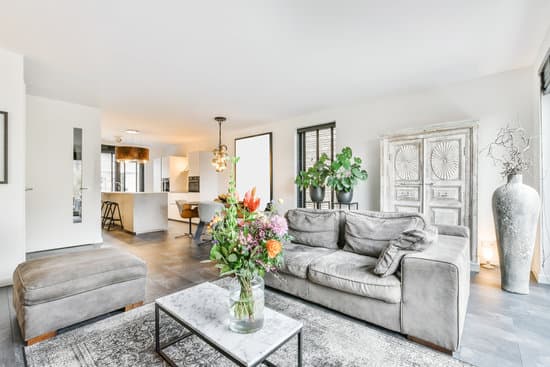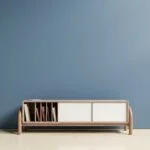Are you curious about which gender buys more home decor? Whether you’re a consumer or a marketer, understanding the home decor market and the influence of gender in purchasing habits can provide valuable insights. In this article, we will delve into statistical data, societal factors, marketing strategies, and the psychology of home decor to explore the disparities in buying habits between men and women.
When it comes to home decor, which gender buys more: men or women? This is a question that has piqued the interest of industry experts and researchers alike. By examining this topic, we can gain a better understanding of consumer behavior and debunk any gender stereotypes that may exist in the world of home decor shopping.
In this comprehensive exploration of the home decor market, we will analyze how societal factors such as gender roles impact purchasing choices, along with statistical data that reveals disparities in buying habits between men and women. Additionally, we will examine how marketers can tailor their strategies to target gender-specific preferences and explore the psychology behind gender differences in design aesthetics.
With case studies highlighting gender-based purchasing patterns, this article aims to provide a well-rounded understanding of this intriguing topic.
The Influence of Gender in Home Decor Purchases
Gender plays a significant role in home decor purchases, influencing the types of items bought, the design aesthetics chosen, and the overall shopping habits of individuals. Studies have shown that there are distinct disparities in the home decor buying habits of men and women, with each gender demonstrating unique preferences and priorities when it comes to decorating their living spaces.
According to a study conducted by HomeGoods, it was found that women tend to be more invested in home decor shopping compared to men. The research revealed that 75% of women enjoy browsing for home decor items, while only 45% of men share the same enthusiasm for shopping for home decorations. This data highlights a clear gender disparity in the level of interest and involvement in home decor purchases.
In addition to differences in shopping behavior, there are also notable variations in design preferences between genders. For example, women often prefer softer color palettes, floral patterns, and decorative accents such as throw pillows and candles, while men tend to gravitate towards bolder colors, clean lines, and functional elements like organizational solutions and tech gadgets for their living spaces.
These distinctions in taste reflect the influence of gender on home decor choices and highlight the importance of understanding these preferences when marketing products to different gender demographics.
| Statistic | Percentage |
|---|---|
| Women who enjoy browsing for home decor items | 75% |
| Men who enjoy browsing for home decor items | 45% |
Statistical Data
Overview of Gender-Based Purchasing Patterns
When it comes to home decor purchases, there are noticeable disparities in buying habits between genders. Statistical data has shown that women tend to be the primary decision-makers when it comes to home decor choices. According to a study conducted by the National Retail Federation, 65% of home decor purchases are made by women. This statistic highlights the significant influence that women have in shaping the home decor market.
Gender Variations in Spending Habits
In addition to being the primary decision-makers, women also tend to spend more on home decor compared to men. Research from HomeGoods revealed that on average, women allocate a larger portion of their budget towards home decor items such as furniture, bedding, and decorative accessories. This spending pattern reflects the importance that women place on creating a welcoming and aesthetically pleasing living environment.
The Role of Men in Home Decor Purchases
While statistical data indicates that women dominate the home decor market, it is important to recognize the increasing participation of men in making purchasing decisions for home decor items. The same study by the National Retail Federation found that 35% of men are now actively involved in choosing and buying home decor products. This shift illustrates a changing landscape in which both genders play a crucial role in shaping the home decor industry.
Understanding these gender disparities provides valuable insights for companies looking to effectively target their marketing strategies towards specific consumer segments. By recognizing and acknowledging these variations, businesses can tailor their approach to appeal to both male and female customers in the competitive home decor market.
Societal Factors
Traditional Gender Roles in Home Decor
Traditionally, gender roles have played a significant role in influencing home decor choices. Historically, women have been assigned the responsibility of creating a comfortable and aesthetically pleasing home environment, while men have been seen as the providers and decision-makers when it comes to larger purchases such as furniture and appliances. These traditional gender roles have had a lasting impact on the way home decor is marketed and consumed.
Changing Gender Dynamics
In recent years, there has been a shift in traditional gender dynamics, with more men taking an active interest in home decor and design. As societal attitudes continue to evolve, the lines between “men’s” and “women’s” home decor preferences are becoming increasingly blurred. This changing landscape has led to a more inclusive approach by marketers and retailers, who are now recognizing the diversity of preferences within each gender.
Gender-Neutral Home Decor
The rise of gender-neutral home decor reflects the changing attitudes towards traditional gender roles. Many consumers are increasingly seeking out designs and products that are not specifically targeted towards one gender or another.
This trend has led to a re-evaluation of marketing strategies, with many retailers focusing on inclusivity and diversity in their home decor offerings. As a result, the industry is seeing a greater emphasis on unisex color palettes, minimalist designs, and versatile furniture options which appeal to both men and women.
As societal attitudes continue to evolve, it is important for marketers and retailers to acknowledge the impact of changing gender dynamics on home decor choices. By recognizing the shifts in traditional gender roles and embracing inclusivity, businesses can better cater to the diverse preferences of consumers regardless of their gender.
Marketing Strategies
When it comes to home decor, understanding the preferences of different genders is crucial for successful marketing strategies. By targeting gender-specific preferences, companies can effectively tailor their products and marketing efforts to reach a wider audience. Here are some key strategies for targeting gender-specific preferences in the home decor market:
1. Conducting Market Research: Before implementing any marketing strategy, it’s important to conduct thorough market research to understand the specific preferences of each gender when it comes to home decor. This can involve analyzing sales data, conducting surveys and focus groups, and monitoring social media trends to gain insights into what appeals to men and women.
2. Creating Gender-Specific Product Lines: One effective marketing strategy is to create gender-specific product lines that cater to the unique tastes of men and women. For example, companies can develop a range of minimalist, industrial-inspired home decor items targeted towards men, while offering a selection of floral, pastel-colored pieces aimed at women.
3. Tailoring Advertising Campaigns: In addition to product lines, companies can tailor their advertising campaigns to appeal to specific gender demographics. This can involve using language, imagery, and messaging that resonates with men or women, as well as choosing the right channels for advertising based on where each gender is most likely to be reached.
By utilizing these marketing strategies, companies can tap into the differences in home decor preferences between genders which will ultimately increase sales and brand loyalty among both male and female customers.
Psychology of Home Decor
When it comes to home decor, understanding the psychology of design aesthetics is crucial in determining the preferences of different gender demographics. Research has shown that there are distinct differences in the way men and women perceive and choose home decor, which can be attributed to various factors including societal influences, personal preferences, and psychological tendencies.
One key factor that influences gender differences in design aesthetics is the concept of masculinity and femininity. Generally, men tend to prefer minimalist and functional designs, focusing on practicality and efficiency, while women often lean towards more intricate and decorative elements that evoke a sense of warmth and coziness. These preferences are deeply rooted in societal expectations of gender roles, where men are encouraged to prioritize utility and simplicity, while women are expected to prioritize nurturing and comfort.
In addition to societal influences, psychological tendencies also play a significant role in shaping gender-specific design aesthetics. Studies have shown that women generally have a higher sensitivity to color and texture, which translates into their preference for vibrant hues and tactile materials in home decor.
On the other hand, men tend to gravitate towards neutral tones and clean lines, reflecting their inclination towards visual orderliness and functionality. Understanding these psychological distinctions can provide valuable insights for marketers looking to target specific gender demographics within the home decor market.
Case Studies
When it comes to home decor purchasing patterns, there is a noticeable difference between the buying habits of men and women. According to recent studies, women tend to spend more on home decor items compared to men. In fact, research has shown that women make up around 70% of the consumer base for home decor products. This can be attributed to various factors such as societal expectations, gender roles, and personal preferences.
One of the key reasons why women tend to buy more home decor items is related to their traditionally assumed role as homemakers and caretakers. Women are often responsible for making decisions related to household aesthetics and creating a comfortable living space for their families. This explains why they are more inclined to invest time and money in purchasing decorative items for their homes.
On the other hand, men have historically been associated with being the primary breadwinners and providers, with less emphasis placed on their involvement in home decoration decisions. However, this trend is gradually changing with more men taking an active interest in interior design and home decor. As a result, marketing strategies need to adapt to these shifting gender dynamics in order to effectively target both male and female consumers in the home decor industry.
| Gender | Percentage of Home Decor Purchases |
|---|---|
| Women | 70% |
| Men | 30% |
Conclusion
In conclusion, the data and analysis presented in this article clearly debunk the gender stereotype that women are the primary purchasers of home decor. While it is true that women have historically been associated with home decorating, statistical data and case studies have shown that both men and women play significant roles in buying home decor. The influence of gender in home decor purchases seems to be less pronounced than commonly thought.
Societal factors undoubtedly impact home decor choices, but it is clear that marketing strategies targeting gender-specific preferences may not be as effective as previously believed. Instead, companies should focus on understanding individual tastes and preferences, rather than relying solely on stereotypes based on gender.
It is important for businesses and society as a whole to recognize and embrace the diversity of perspectives when it comes to home decor. As we move forward, we should continue to challenge assumptions about which gender buys more home decor and strive for inclusivity in marketing and design efforts. Ultimately, creating living spaces that reflect the unique individuality of each person, regardless of their gender, will lead to a more satisfying and fulfilling experience for everyone involved.

I’m thrilled to be your companion on this exciting journey through the world of home decor and design. With a passion for turning houses into homes and a keen eye for the finer details, I’m here to help you transform your living spaces into beautiful, functional, and meaningful havens.





